Are you curious about zk-rollup projects and want to know which zk-rollups currently compete for the #1 spot on the 2023 leaderboard? If so, look no further! This article provides an extensive list of the best zk-rollup projects, including the latest developments and unique angles for each one!
Below the list, you can also learn about the basics of the “zk” scaling solution in Web3. In addition, we explain which networks use zk-rollups, what zk assets are, and where to buy them. Last but not least, we also explore the topic regarding zk-rollup projects and Web3 development. This is where you can learn how to create dapps on the current lending networks the easy way. The key to that is Moralis. So, if you are interested in joining the Web3 revolution by BUIDLing killer dapps, sign up with Moralis today!

When it comes to building Web3 – the next iteration of the internet – Ethereum remains the most obvious layer-one (L1) network. However, in its current state, it’s unable to facilitate mass adoption. Consequently, Ethereum scaling solutions have been emerging during the last few years. As such, there are now several different scaling solutions for Ethereum in existence, with optimistic rollups currently leading the show. However, most blockchain development experts believe that zk-rollups are poised to come out on top. With that said, let’s look at the ultimate list of zk-rollup projects.
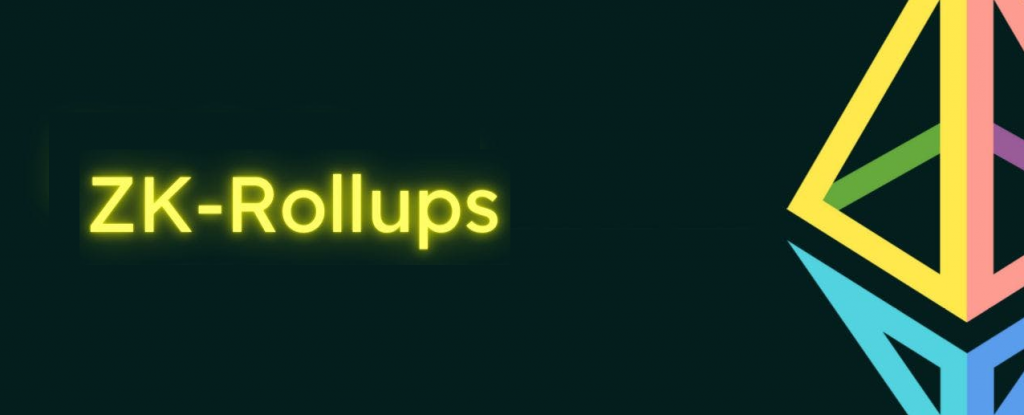
List of Top ZK-Rollup Projects – Exploring the Best ZK-Rollups
Keep in mind that new zk-rollup projects are emerging every day. Therefore, it’s practically impossible to make a complete list. Still, below is a list of the best zk-rollups up until March of 2023, most of which are in the development or testing phases. That said, we encourage you to do more research since new updates and new projects might emerge that deserve your full attention. Now, without further ado, let’s dig into the main topic of this article!

- Starknet – A permissionless decentralized zk-rollup operating as a layer-two (L2) network on top of Ethereum.
- Founded in 2017 and launched in November 2021.
- The company behind Starknet is StarkWare.
- Periodically batches transactions and provides “STARK” proofs.

- ZKSync – A trustless protocol that uses cryptographic validity proofs to provide scalable and low-cost transactions on Ethereum.
- Founded in 2020, launched in February 2022.
- The startup behind zkSync is Matter Labs.
- It supports full EVM (Ethereum Virtual Machine) compatibility.

Polygon ZK Rollups Suite by Polygon Labs
- Polygon Hermez – A zk-rollup project utilizing the proof-of-efficiency (PoE) consensus algorithm focused on decentralization as the primary objective.
- Polygon acquired Hermez Network in August 2021.
- Unique angles:
- It features a collection of aggregators and sequencers with in-built crypto-economic incentives that are responsible for basic functionalities of the rollup.
- 2,000 transactions in a single batch.
- Generates SNARK (succinct non-interactive argument of knowledge) proofs for confirming transaction validity.
- Polygon Miden – Serves as a general-purpose zk-rollup featuring EVM compatibility and the support of STARK-proof verification.
- Announced in November 2021.
- Unique angles:
- EVM (Ethereum Virtual Machine) compatibility – it supports Solidity smart contracts.
- It utilizes STARK-proof verification.
- Miden assembly programming language.
- Guarantees transaction throughput of more than 1,000 transactions per second (5,000 transactions in one block with the production of new blocks every five seconds).
- Polygon Zero – A zk-rollup solution based on the Plonky2 mechanisms (formerly Mir Protocol).
- Launched in January 2022.
- Unique angles:
- Simultaneous generation of proofs for each transaction in the rollup.
- Assurance of compatibility with EVM.
- Batching around 3,000 transactions for each block.
- Polygon Nightfall – A business-grade (permissioned) hybrid (optimistic and zk) rollup solution tailored for offering private transactions.
- Polygon ZKEVM – The leading zero knowledge scaling solution that’s fully compatible with EVM.
- The zkEVM testnet launched in October 2022.
- Polygon zkEVM evolved from Polygon Hermez 1.0 and it is essentially the rebranding of Polygon Hermez 2.0.
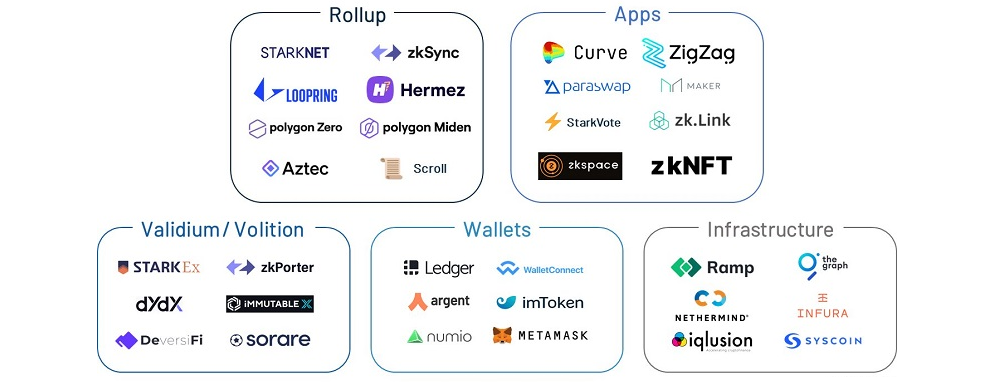
Other ZK-Rollup Projects
- Dusk Network – An open-source and secure privacy blockchain (DLT) infrastructure that uses Rusk (the first zero-knowledge virtual machine) and PLONK zk cryptography.
- Aztec Network – Aztec claims to be building blockchain encryption without compromising privacy or security using advanced zero-knowledge cryptography (zkSNARKs).
- Loopring – Designing and engineering the best-in-class zk-rollup exchange and payment protocol on Ethereum.
- Mina – An L1 (layer-1) protocol that utilizes zero-knowledge proofs (zkSNARKs) in an attempt to deliver true decentralization, scale, and security.
- StarkWare – A company that develops STARK-based solutions for the blockchain industry. Their products facilitate secure, trustless, and scalable blockchain applications. StarkWare is behind StarkEx (a permissioned and tailor-made scaling L2 engine) and Starknet.
- Mute – A decentralized exchange (DEX), and a farming and bond platform, based on a zk-rollup – built on Ethereum and zkSync.
- ImmutableX – An industry-leading NFT minting and trading platform that uses StarkEx.
- DYDX – Powered by StarkWare, dydx is a decentralized perpetual trading platform that uses StarkEx.
- Sorare – An online sports project that uses StarkEx and gives its community a new way to connect to clubs and players.
- Celer – A blockchain interoperability protocol built on StarkEx that enables a one-click user experience accessing tokens, DeFi, GameFi, NFTs, governance, and more across multiple chains.
- DiversiFi – An L2 exchange built on Ethereum that uses StarkEx.
- ZigZag – A native DEX built on zkSync.
- Argent – A non-custodial wallet integrated with zkSync.
- ZKLend – An L2 money-market protocol built on Starknet.
- Stable Pay – A decentralized cryptocurrency payment platform powered by smart contracts in the Ethereum network built on zkSync.
- Numio – A non-custodial Ethereum L2 wallet built on zkSync.
- Scroll – A zkEVM-based zk-rollup on Ethereum.
- Syscoin’s Rollux – Rollux is an L2 network (a fork of Optimism v1) that utilizes optimistic rollups; however, Rollux promise to include zk-rollups in the future.

What is ZK in Web3?
In Web3, zk stands for “zero knowledge”. This term refers to a cryptographic technique that supports proving the authenticity of data without revealing the data itself. In other words, with zero knowledge about the data, one can still prove its authenticity. One of the most common use cases of this technique was adopted by a special kind of Ethereum scaling solution known as zk-rollups.
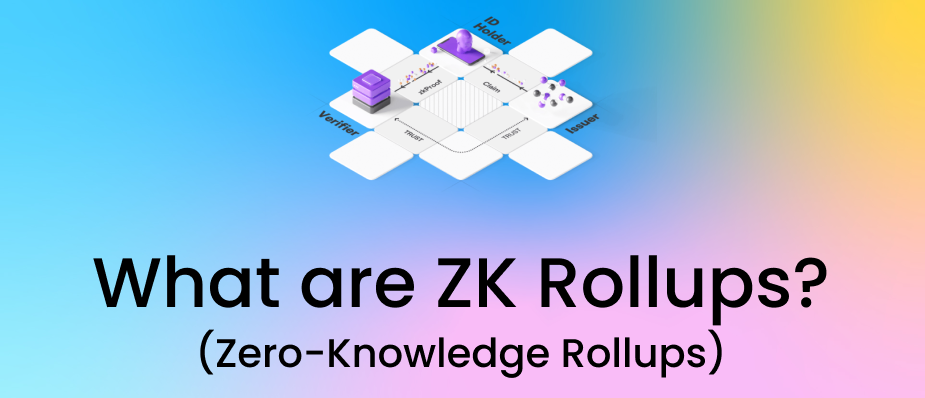
Rollups are scaling solutions for Ethereum. They enable faster and more cost-effective transactions. Furthermore, rollups achieve this by processing transactions off-chain, where the data is aggregated into a bundle. Now, to ensure the validity of off-chain transactions, zk-rollups use zero-knowledge proofs. These provide an additional layer of privacy and security. Moreover, the bundle of transaction data is then sent to the Ethereum mainchain, where a smart contract executes and records the bundle as a single transaction. Obviously, this reduces the number of transactions that Ethereum needs to process, which results in faster and more efficient Web3.
Which Networks Use ZK-Rollups?
There are several blockchain networks that use zk-rollups in one way or another. However, the leading L2s with this type of scaling solution are Starknet, zkSync, and Polygon zkEVM. As indicated in the list of top zk-rollup projects above, these leading “zk” networks tend to be referred to as the best zk-rollups. Other mention-worthy networks that use zk-rollups include Dusk Network, Aztec Network, Mina, Celer, Scroll, Loopring, and ImmutableX.
ZK Assets in Crypto and Where to Buy
When it comes to zk assets in crypto, they refer to altcoins (various cryptocurrencies) released by zk-rollup projects. Keep in mind that not every zk-rollup project has its own token; however, most do. Additionally, the utility case for each token varies greatly from project to project.
If you are interested in buying these assets, you typically have two options. If the project is in its early stage and offers a public sale of its tokens, you may be able to buy them via the project’s official site. However, in most cases, you’ll need to use one of the centralized or decentralized exchanges (CEXs or DEXs). There, you’ll get to exchange your ETH, wETH, or ERC-20 stable coins for those tokens.
The simplest way to find where you can buy the zk assets is by using blockchain explorers, such as CoinMarketCap or CoinGecko.
Here are examples of finding markets that trade Loopring’s token LRC:
Use the search box and enter the project’s name or the asset symbol:

After clicking on the offered option, you will be taken to the project page. There, you need to select the “Markets” tab. In addition, with CoinMarketCap, you can even decide whether you want to display all exchanges or just CEXs/DEXs:

After entering the name or ticker of the project/token into the search box, you need to click on one of the suggested options. Once on the project page, you need to scroll down and select the “Markets” tab, where you’ll see all the exchanges that offer that asset:
ZK-Rollup Projects and Web3 Development
Out of the existing Ethereum scaling solutions, zk-rollup networks are in relatively early stages. Thus, it may be better to focus your development efforts on more established networks. If you want to focus on fast L2s, the Optimism network and Arbitrum may be the right choice. Both of these networks use optimistic rollups. As such, they utilize the same scaling concept (rollups) but instead use fraud proofs to ensure the validity of off-chain transactions. Another great alternative is Polygon, which is an even more well-established network. Fortunately, Moralis’ cross-chain interoperability supports all of these networks.
Since Moralis supports all the leading programming languages, you get to start building dapps with your legacy dev skills. You can start by taking on example projects, helping you get the hang of Web3-specific aspects. Plus, you should always first deploy your dapps on the testnet for your desired network. For example, if you wish to target the Arbitrum chain, you should initially focus on the Arbitrum testnet. That said, if that interest you, make sure to use the “Arbitrum testnet” link to learn more about this “sandbox” network! By clicking on that link, you’ll also find a neat example project that you can follow along with and complete in minutes by cloning our code.
With the Moralis Web3 Data, Auth, and Streams APIs, you can build all sorts of dapps without breaking a sweat or the bank. In fact, you could be just hours away from creating a new Web3 wallet, portfolio tracker, NFT marketplace, etc. With the Web3 Data API, you can fetch all sorts of on-chain data with single lines of code. Using the Auth API, you get to implement Web3 authentication. Also, with Moralis Streams, you can listen to on-chain events and create real-time notifications for your dapps, bots, etc.
ZK-Rollup Projects – Exploring Top ZK-Rollups in 2023 – Summary
In today’s article, you had a chance to explore all the leading zk-rollup projects in 2023. You now have an extensive list of projects to explore further and determine which of these is the best zk-rollups in your opinion. In addition, we also covered the meaning of “zero knowledge” in Web3. Plus, you learned that there are several zk-rollup projects that aim to become suitable networks you could build upon. However, you also learned that most of these types of networks (zk-rollups) aren’t yet ready for production purposes. In fact, most of them only have their testnets up and running or not even that. Thus, we suggested you focus on developing dapps on the existing L1s and L2s. Lastly, you now know that you do not have to limit yourself to a single chain, thanks to Moralis’ cross-chain interoperability.
If you have Web3 basics under your belt, jump into the Moralis docs and start BUIDLing right away! You can also learn Web3 development by following our tutorials that await you on the Moralis YouTube channel and the Moralis blog. By following our lead, you can easily create an ERC-721 NFT or even create a DAO. You can also dive into Web3 marketplace development and explore how to build a Web3 Amazon clone or build a portfolio dapp using our crypto dashboard template. Our blog is also the place to learn more about other blockchain development topics and tools. For instance, you can find an answer to the “what is an xNFT?” question, get acquainted with a crypto faucet (e.g., Goerli testnet faucet), and much more.
Read More: moralis.io

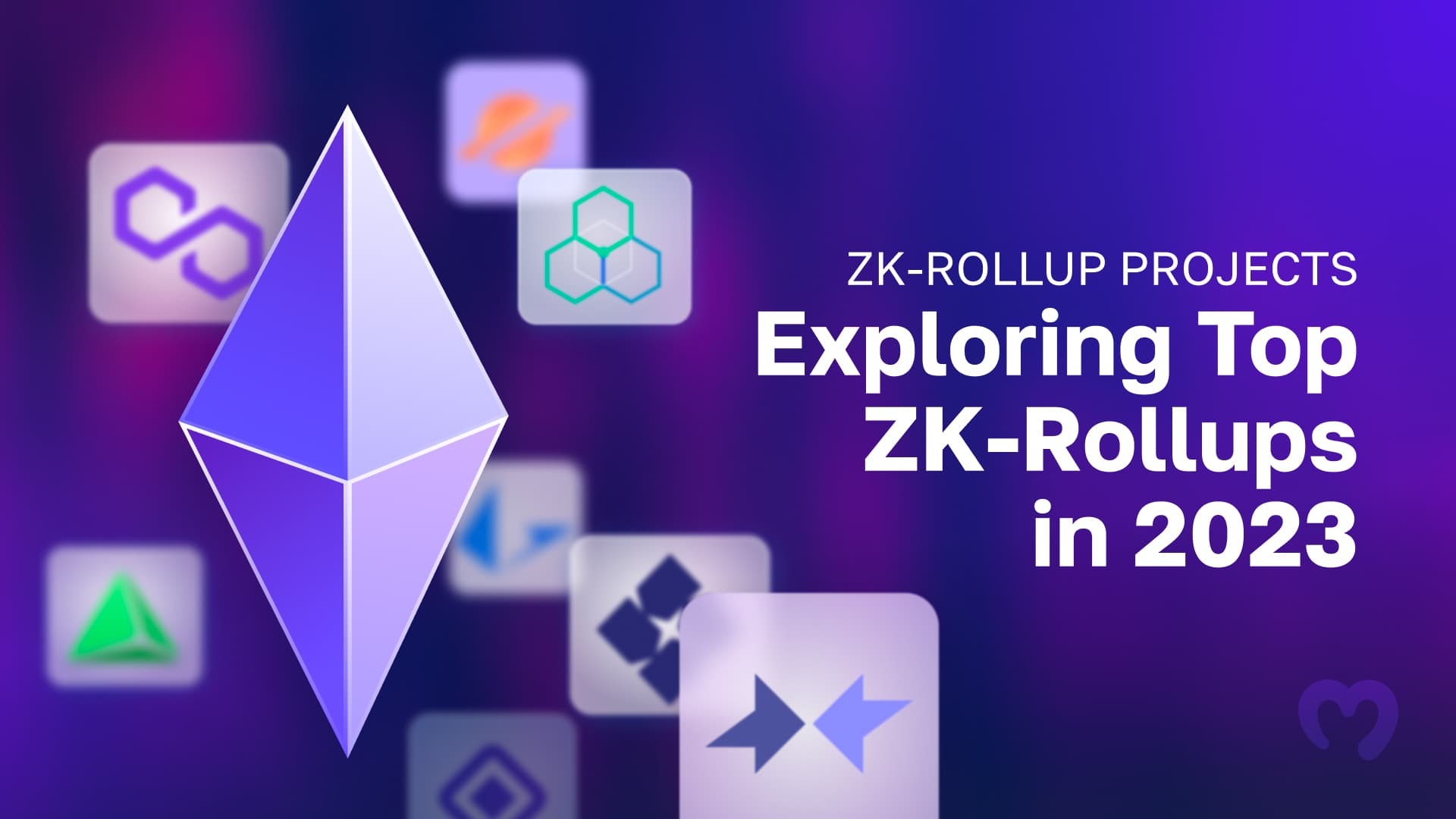



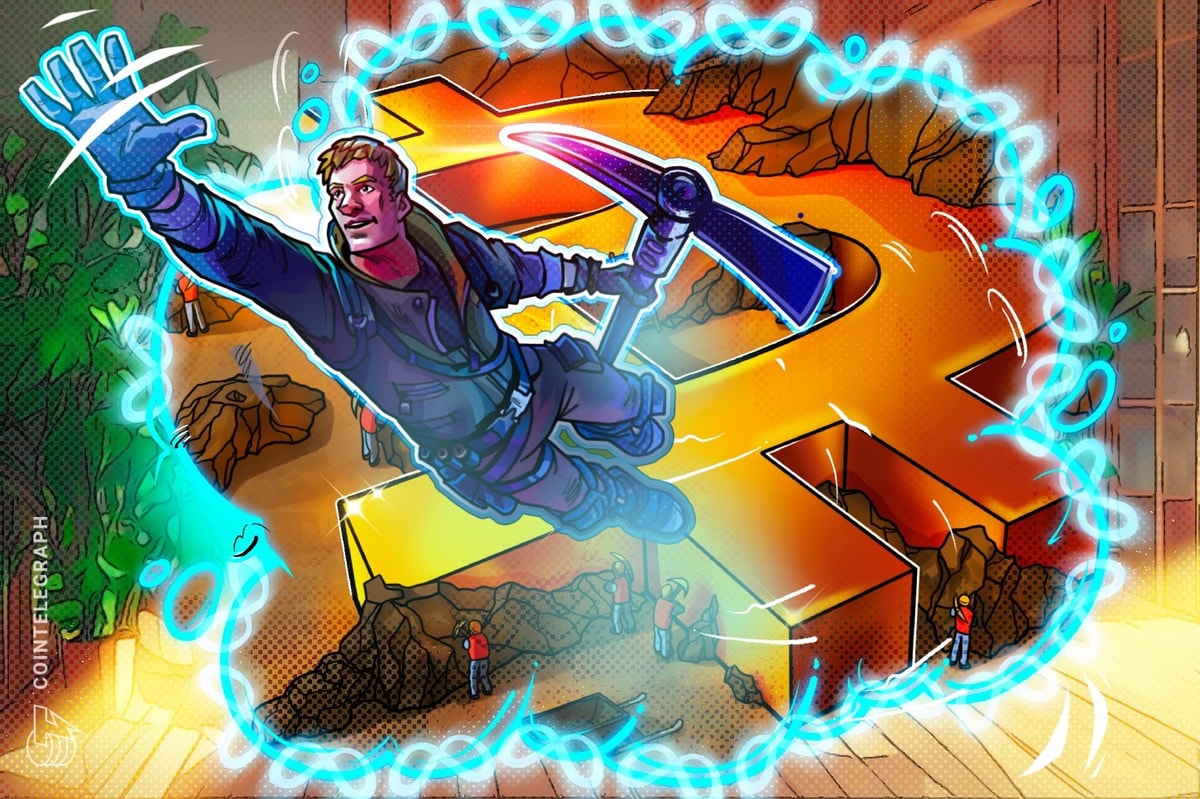
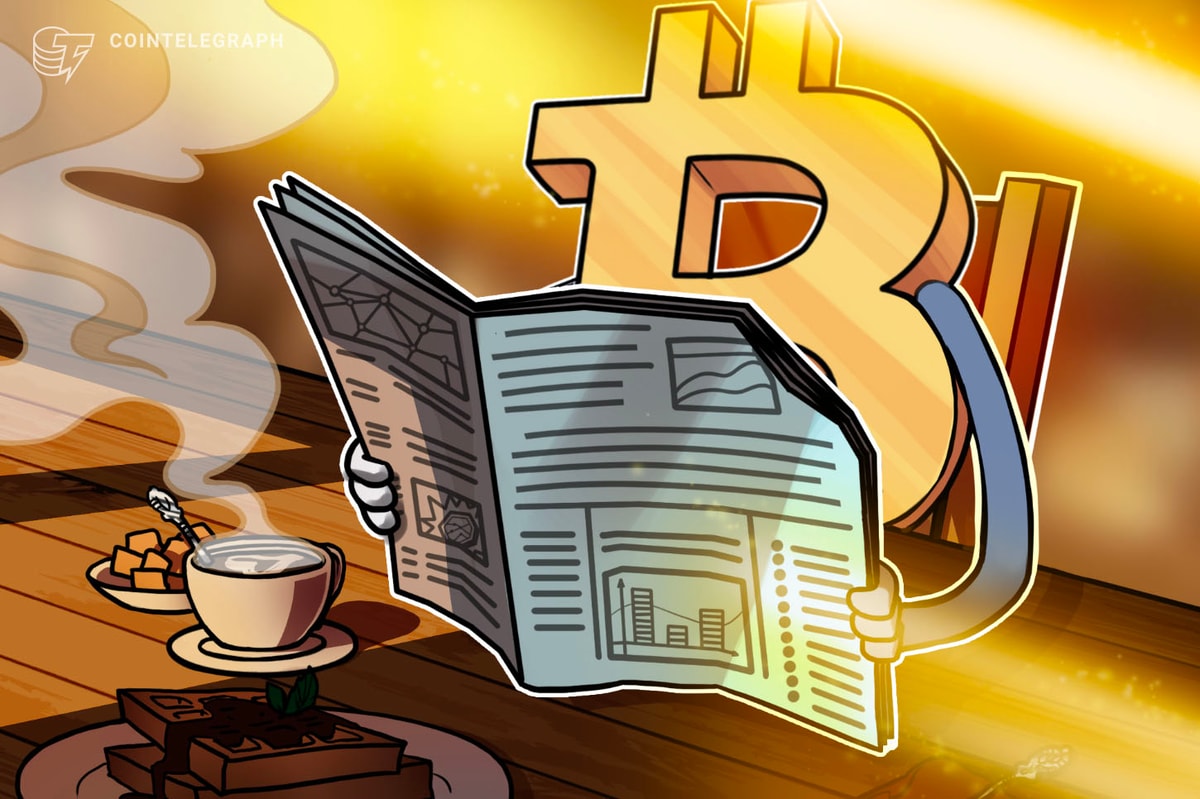


 Bitcoin
Bitcoin  Ethereum
Ethereum  Tether
Tether  XRP
XRP  Solana
Solana  USDC
USDC  Dogecoin
Dogecoin  Cardano
Cardano  TRON
TRON  Lido Staked Ether
Lido Staked Ether  Wrapped Bitcoin
Wrapped Bitcoin  Sui
Sui  Chainlink
Chainlink  Wrapped stETH
Wrapped stETH  Avalanche
Avalanche  Stellar
Stellar  Shiba Inu
Shiba Inu  Hyperliquid
Hyperliquid  Hedera
Hedera  LEO Token
LEO Token  Bitcoin Cash
Bitcoin Cash  Toncoin
Toncoin  Litecoin
Litecoin  Polkadot
Polkadot  USDS
USDS  WETH
WETH  Pi Network
Pi Network  Monero
Monero  Wrapped eETH
Wrapped eETH  Pepe
Pepe  Bitget Token
Bitget Token  Binance Bridged USDT (BNB Smart Chain)
Binance Bridged USDT (BNB Smart Chain)  Ethena USDe
Ethena USDe  Coinbase Wrapped BTC
Coinbase Wrapped BTC  WhiteBIT Coin
WhiteBIT Coin  Bittensor
Bittensor  Uniswap
Uniswap  Dai
Dai  NEAR Protocol
NEAR Protocol  Aptos
Aptos  Aave
Aave  OKB
OKB  Ondo
Ondo  Jito Staked SOL
Jito Staked SOL  Internet Computer
Internet Computer  Ethereum Classic
Ethereum Classic  Cronos
Cronos  BlackRock USD Institutional Digital Liquidity Fund
BlackRock USD Institutional Digital Liquidity Fund